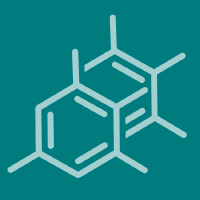Topic Menu
► Topic MenuTopic Editors

Advances in Chemical Ecology
Topic Information
Dear Colleagues,
Semiochemical signals, including pheromones, allomones, kairomones, and synomones, are used as a form of intra- and inter-species communication, which can benefit the sender and/or receiver. Chemical cues among plants and insects, mites, gastropods, nematodes, and microorganisms provide an opportunity to further help our understanding of ecological interactions and more effectively manage natural and agricultural ecosystems. Disruptions or modifications to these chemical cues can aid in the development of novel pest control strategies in agriculture and forestry. Next-generation techniques will facilitate the use of semiochemicals in integrated pest management as powerful tools for agricultural systems. This Topic on “Frontiers in Chemical Ecology” welcomes original research and reviews on ecological interactions between organisms and agriculturally related issues. The focus is on chemically mediated interactions between plants, insects, mites, gastropods, nematodes, and microbes; analytical tools to identify novel semiochemicals, including but not limited to gas chromatography (GC), coupled GC–mass spectrometry (GC-MS), GC–electroantennography (GC-EAG), different extraction approaches involving distillation and solventless volatile collections methods, behavioral experiments, electroantennogram (EAG) responses, as well as artificial intelligence algorithm applications in communication, clustering, and classification methods.
Dr. Daniel Carrillo
Dr. Nurhayat Tabanca
Topic Editors
Keywords
- chromatographic techniques and identification of semiochemicals
- chemical communication
- exotic species
- insect pheromones
- olfactory cues
- courtship and mating behavior
- biopesticides
- symbiosis
- agroecology
- pest control methods and integrated pest management
Participating Journals
| Journal Name | Impact Factor | CiteScore | Launched Year | First Decision (median) | APC |
|---|---|---|---|---|---|

Applied Sciences
|
2.7 | 4.5 | 2011 | 16.9 Days | CHF 2400 |

Biomolecules
|
5.5 | 8.3 | 2011 | 16.9 Days | CHF 2700 |

Insects
|
3.0 | 4.2 | 2010 | 17 Days | CHF 2600 |

Molecules
|
4.6 | 6.7 | 1996 | 14.6 Days | CHF 2700 |

Plants
|
4.5 | 5.4 | 2012 | 15.3 Days | CHF 2700 |

MDPI Topics is cooperating with Preprints.org and has built a direct connection between MDPI journals and Preprints.org. Authors are encouraged to enjoy the benefits by posting a preprint at Preprints.org prior to publication:
- Immediately share your ideas ahead of publication and establish your research priority;
- Protect your idea from being stolen with this time-stamped preprint article;
- Enhance the exposure and impact of your research;
- Receive feedback from your peers in advance;
- Have it indexed in Web of Science (Preprint Citation Index), Google Scholar, Crossref, SHARE, PrePubMed, Scilit and Europe PMC.


